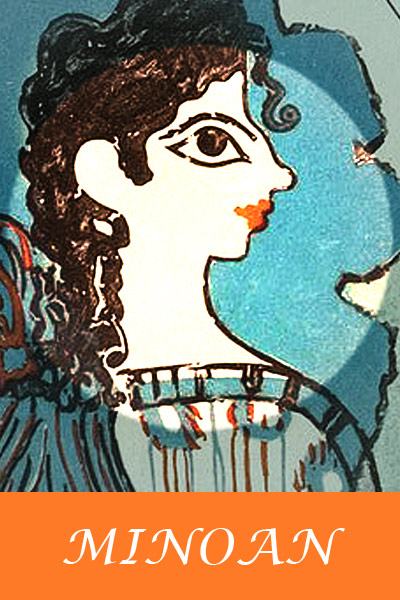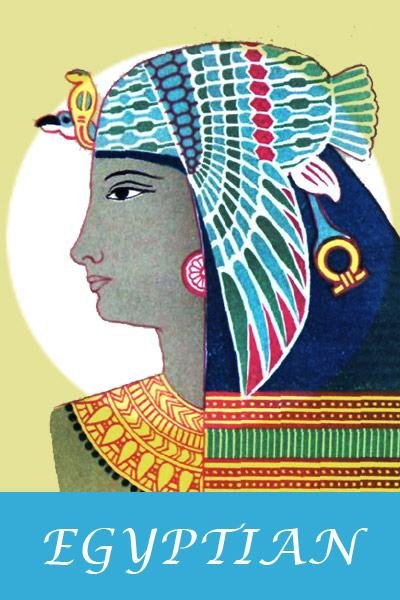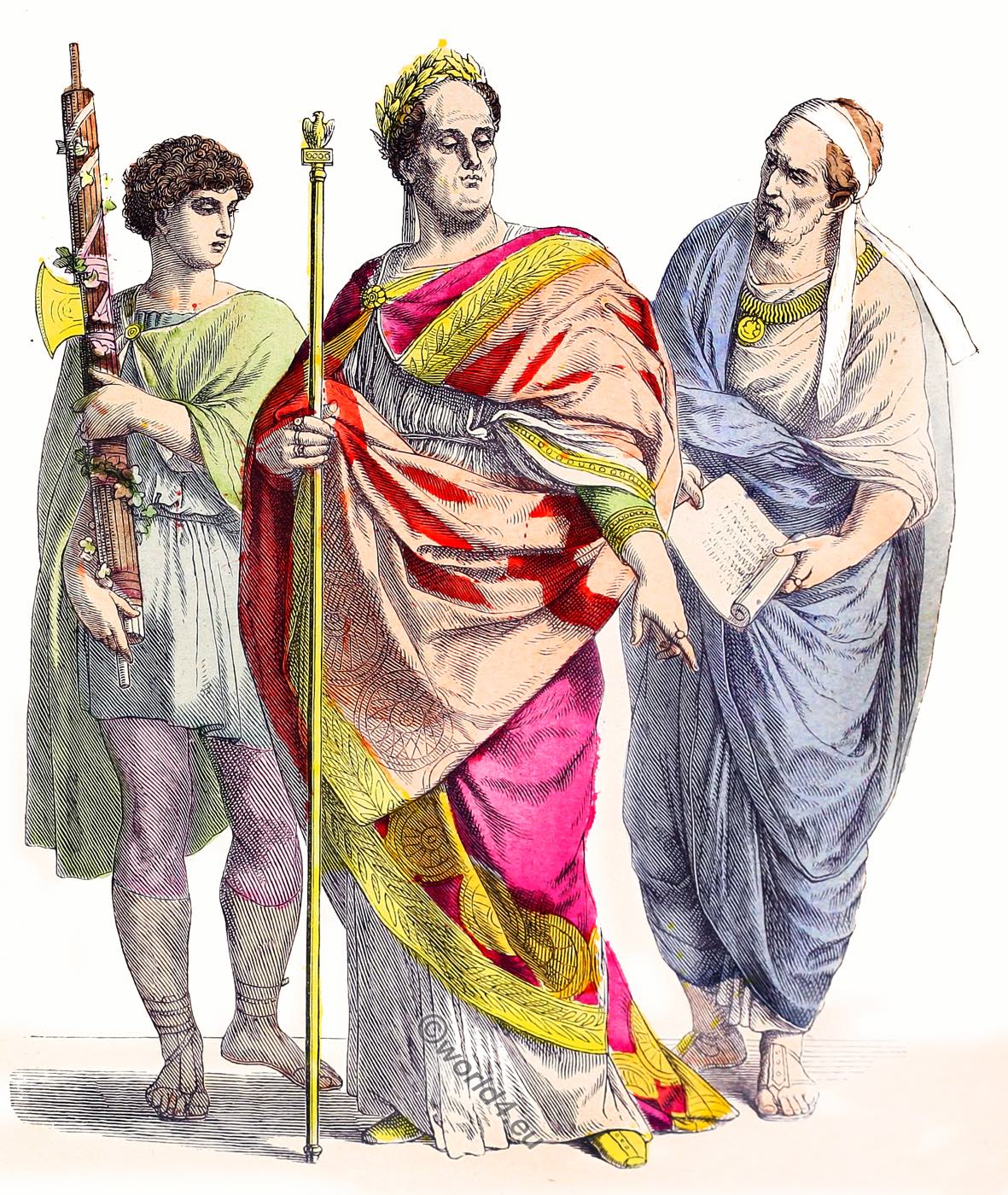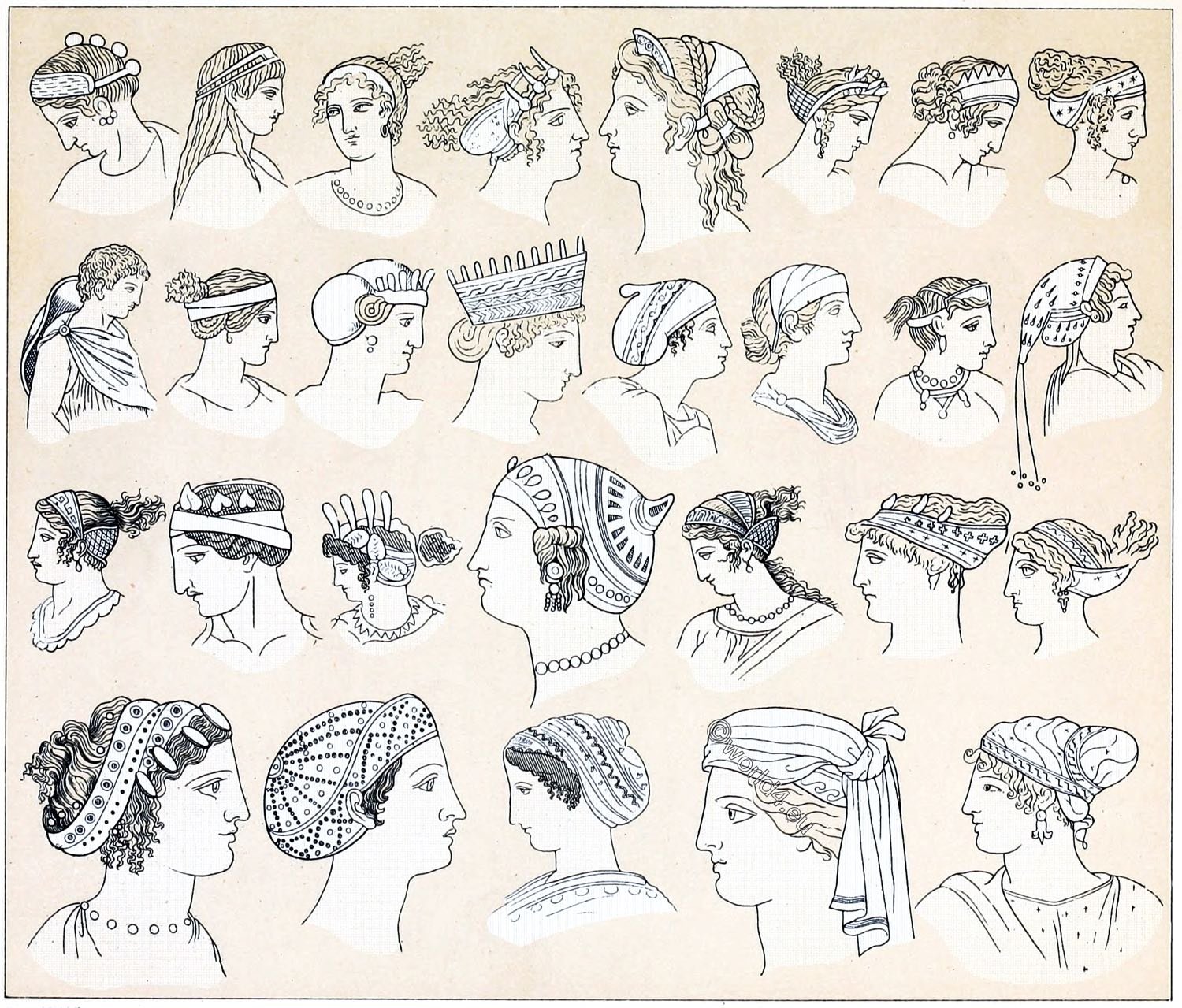Clothing in Ancient Greece.
History and Dress.
Greek Costume.—(1) Pre-Hellenic otherwise called Minoan or Mycenaean Age (2800-1200 B.C.). Men wore waist cloth with hanging ends. Women wore tight-fitting waists and flounced skirts.
(2) Homeric or Heroic Age (1200 B.C.). Both men and women wore a simplified costume not unlike the classic.
Dorian Invasion, 8th century B.C. Rise of Sparta, inhabitants called Dorians. Rise of Athens, 5th century B.C., inhabitants called Ionians.
(3) Classic Period. Costume of Greek men and women was the same except that of the men was more abbreviated.
(a) Chiton or dress.
(b) Himation or cloak.
(c) The chlamys or short coat was worn on horseback. The chiton or dress was of two kinds. The Doric chiton, worn by the Dorians, who were warlike and interested primarily in the physical, made of heavy material and fell in few folds, had no sleeves.
The Ionic chiton, worn by the Ionians, a people fond of all things beautiful, made of finer material, fell in many and finer folds, had sleeves. Girdle was worn at the waistline during the Archaic period, sixth century B.C. Statues of people of this century adorn the Acropolis. This was the elaborate period when cascades of material are found in the statues.
Girdle worn over the hip or below the waist in the Golden Age. This was sometimes called the Age of Pericles, 459-431 B.C. The maidens of the Parthenon frieze are of this time. Girdle worn under the arms during the last period. Wool, linen and silk were used, and the garments were dyed purple, red, yellow, and other colors. Sandals and shoes were worn when out of doors, and the women had many different kinds of jewelry and hair ornaments.






